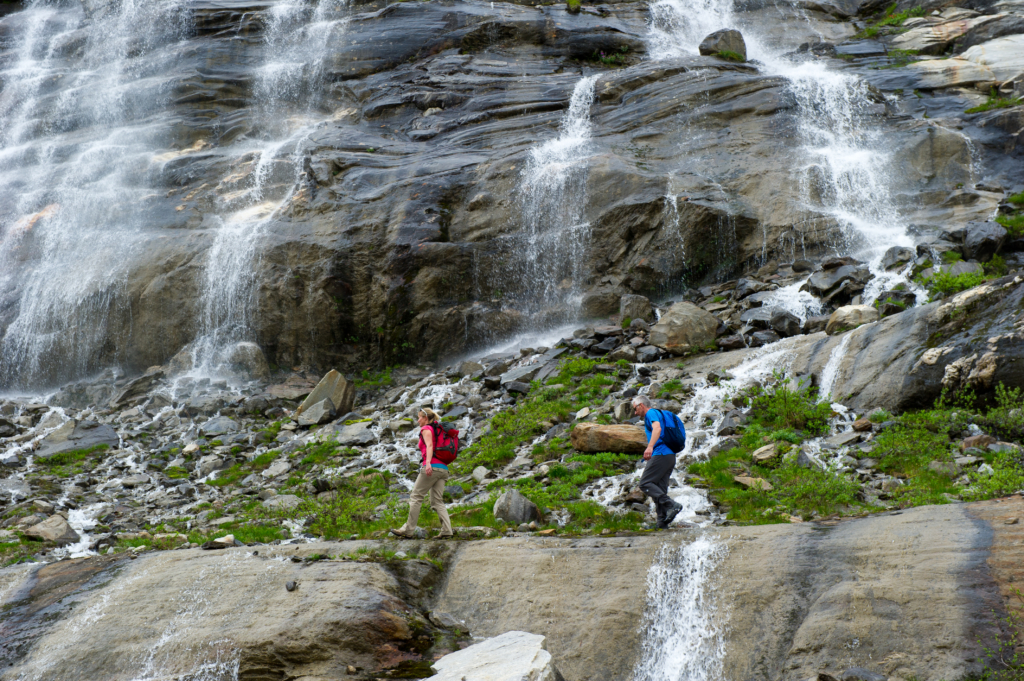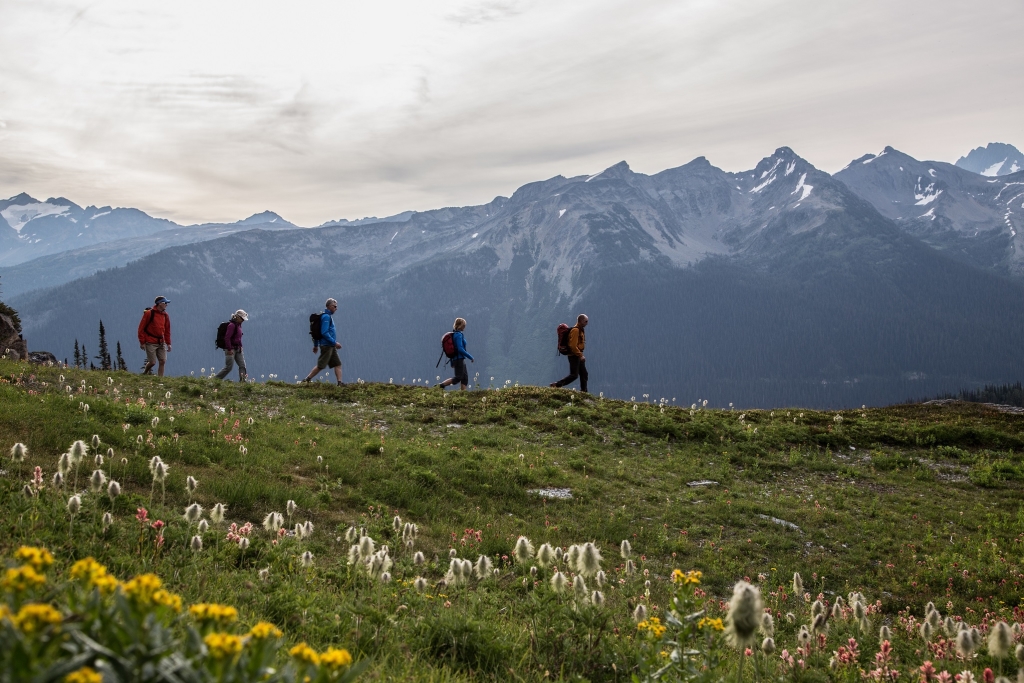WORDS BY JANE CARSWELL
In preparation for hiking in British Columbia this summer, you may be in search of a new pair of hiking boots. CMH heli-hiking guide, Lyle Grisedale has put together a few tips to aid you in your quest for the perfect fitting hiking boot.

Consider the purpose
During a Summer Adventure trip, we don’t always walk on designated hiking trails such as those you will find in your local parks. You’ll explore a wide variety of terrain from alpine meadows to rocky scree slopes and even rock slab. We do walk on game trails through forested areas and often we cross streams, through wet grasses, and over any snow remaining from winter. If you’re planning to hike similar terrain elsewhere, you’ll need a boot that is sturdy, waterproof, and one that covers the ankle offering support to the area.
Material
The boots you purchase can be all leather, a mix of leather and synthetic, or completely made of synthetic materials. All three choices do the job! Regardless of the material for the top of the boot, make sure your boot has a Vibram sole. This is a rubber that provides excellent traction on rocks. Some excellent brands to explore are Merrell, Salomon, Asolo, Scarpa, Garmont, Vasque and La Sportiva (to name a few).

Purchasing and fitting tips
Socks
Bring a pair of your hiking socks when purchasing your hiking boots. Try on any boots using the same type of sock that you’ll be wearing out on the trail. Tip: wool or synthetic socks are best.
Use
Explain the sort of terrain you will be using your boots on so that the salesperson can make the proper recommendations. It is wise to know if the boot you purchase can be re-soled after long-term use.
Finding a good fit
Size is not as important as fit. It’s completely normal to wear different size hiking boots compared to your daily footwear, depending on the brand you select. Start with your normal shoe-size but don’t shy away from a larger or smaller size.
- Place your foot in the boot and stand up. Don’t worry about lacing up the boots yet.
- Stand up straight and push your foot forward into the toe of the boot. Your toes should just touch the front but not be jammed against the front.
- You should be able to slip your index finger between your heel and the back of the boot. Do this for both boots. Having this space will allow your feet to fit comfortably and will help prevent your toes from being smashed into the front of your boots when walking downhill.
- Sit down and lace both boots. As you do so, make sure your heel has moved backward filling the space your index finger created.
- Stand up and walk around. Do your toes touch the front of the boot? If so, go for a larger sized boot. Also, make certain that your toes do not touch the top of the boot. If they do then you will need a boot with a larger (front-side) volume. As you walk, the heel of your foot and the heel of the boot should move together in harmony. If not then your boots are either too large in size or the shape of the arch and heel cup are incompatible with the shape of your feet, or the sole is too stiff. Start over with another boot until you find the perfect fit.

Feel free to bring your boots on your next CMH Summer Adventure, or use ours. On a Summer Adventure trip, we provide great quality hiking boots (as well as jackets, packs and rain gear), however the comfort of having your own is that you can use the boots to enjoy the many great hiking trails in Banff, Yoho, Kootenay and Jasper National Parks before or after your CMH trip. Explore CMH Summer Adventures.